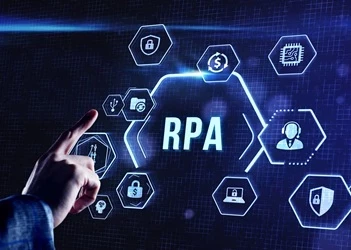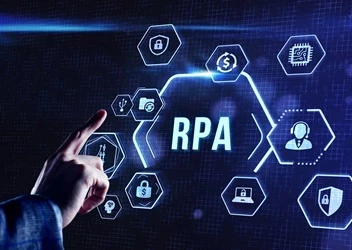‘Good governance is crucial in process automation’
Add bookmarkJörg Bordt, Group Head of Thomas Cook Customer Contact Centers, reflects on lessons learned following RPA roll out and advises companies to focus on IT governance.
Where is Thomas Cook Customer Contact Centers on the RPA journey? Do you have plans to invest further in automation?
We are in the initial phases of roll out; a couple of things are established, but we're not mature yet.
We will invest in RPA in terms of potentially buying more licenses, although we're very much a SAP-oriented kind of organization. We don't want to invest in CapEx, but will rent software, or a Contact Center as a Service CCAAS cloud-based solution. If you call that an investment, we will invest, but not in new pieces of technology, just expanding the licenses that we have.
What benefits have you noticed so far? Have any changes been customer-facing?
We are not using chatbots just yet but we are piloting this. Our focus is on automating internal processes. The benefit for the company is very, very, clearly on saving. We're automating back-office processes and that's a headcount saving, however, in our case it's actually outsourced budget, so, an outsourced headcount.
“RPA forces us to think about our processes and redo those that have become a little bit ugly on the edges”
RPA forces us to think about our processes and redo those that have become a little bit ugly on the edges. It helps streamline processes with clarity and precision, helping to rule out the human-brain element where people say, ‘okay, this is not quite to the rules, but I know how to do it’. It really enforces governance.
How do you decide on whether a human or a robot is better equipped to deal with certain processes?
It really depends on the type of process—anything mundane, repetitive and high volume, where the rules are very clear. For example, data-typing activities take time but do not need a brain to produce an outcome, just a few rules to follow.
After deciding what processes to automate, we ask ourselves if the process is defined enough to potentially achieve less than 40 per cent exceptions.
How do businesses decide on the scale of the RPA activities? What advice would you give?
That's a difficult question. It really depends on the urgency in the organization.
What has proven to be quite successful for us is to grow organizational acceptance and confidence in what can be achieved. Run a pilot. Take one process that has potential and just automate it.
There is a debate to be had between IT and the business on who owns this right to automate. This discussion gave us clarity on ownership and allowed IT to say, this is a business function and is not IT. It is important that businesses learn what this means in a pilot.
“You need somebody who takes ownership of automation for the whole company to make sure the wheel isn’t reinvented”
But do you start automating in finance and then move to operations or not? It really depends on the sense of urgency of the people driving it. You need senior sponsorship, somebody that says, okay, we’re going to do this, that's what we did. There might be another option via a virtual center of excellence. Either way, you need somebody who takes ownership of automation for the whole company to make sure the wheel isn’t reinvented just because finance doesn't have a clue what's happening in HR and neither departments know what’s happening in customer operations.
Have you experienced any challenges when adopting RPA?
Oh, yes, more than enough. On the technology side, we were required to get the right infrastructure in place and incorporate it with our existing complex IT infrastructure. Be very, very careful during this phase, discuss it in every detail and get all the technical designs and architecture in place before you start anything.
“There are security issues because the robots will be dealing with customer data”
Once the robots are in place it's actually very straightforward. However, there are security issues because the robots will be dealing with customer data. If you are working with an RPA solutions provider they will need some service access too and could potentially steal data. This, as well as GDPR data protection and PCIs will all need to be looked at.
Good governance is crucial. There is a belief that processes are well defined but when you go through every detail, real low-level design that you need for programming or the development of robots, we found it's actually not defined at all and some of the rules aren’t even as clear as we thought they would be.
Before automation we had a human base of 60 per cent success or 40 per cent exception. In the pilot, we looked at all of the processes in great detail making sure rules were absolutely correct. Following this, the outcome was a 17 per cent exception.
From a change management and governance perspective, what we found was quite interesting.
How receptive have existing employees been towards the changes?Was it important to get the C-level onboard?
The senior level was onboard right away looking at the business case. They loved it! We’re not a very automated or technology-rich organization. I think travel in general is probably less advanced than some of the telcos and insurance companies or financial services. They're far more advanced.
“We would definitely involve the employee and not carry this out as an ivory-tower project”
We had a good environment because automation is something that actually adds value to employees and they really loved it too! They were completely inspired, generating ideas and use cases. This is fantastic because that's where your designs for automation actually come from. Doing this against employees is not going to work.
Is there anything done you would have differently during the implementation phase?
Firstly, I would have a greater focus on IT governance. There’s so much governance that you have to go through. This was driven from the contact center, the transformation team and not so much from IT.
Secondly, we would definitely involve the employee and teams and not carry this out as an ivory-tower project.
In your opinion, what are the future capabilities of RPA and AI in customer experience?
Chatbots are the big thing right now, but I think there's still a challenge. How do you merge the digital experience, i.e. chatbot, with the human experience, i.e. an agent? There will always be a point where the chatbot cannot continue servicing the customer. I don’t think we're there yet in making it really human-like. It's still a bit technical and that's a big thing.
I believe all the mundane stuff will be automatable. This will allow agents to become more knowledge-focused, making sure the emotional experience is right for the customer.
RPA is a hot topic these days. And, for good reason. It helps organizations drive efficiency, increase productivity, and cut costs by automating various repetitive and manual tasks. Download the report RPA and Enterprise Automation, it takes a deeper look at RPA, as well as technologies that—if implemented—can make RPA more effective than you ever imagined. If you’re currently using RPA… or even just considering it for your business or institution… this special report is meant for you.




















